When it comes to holiday food, my mother is a real traditionalist. No need to ask what will be served at the Seder, for example, because it would be the same every year. Which was also the same as what her mother prepared. One of those standard Pesach/Passover dishes was always knobl borscht. I am much less of a traditionalist when it comes to my holiday meals (perhaps surprisingly, considering the Jewish Food History that I trace on this blog, but it is what it is), and frankly speaking, beets are one of my two least favorite vegetables, hands down. But the flavor of knobl borscht transcends its basic “beetiness,” and it is a soup that I truly love.
That flavor is one of the key things I want to focus on in this post, along with how borscht also embodies some of the overall changes in Ashkenazi food over the past century and a half. But the first point fascinates me, as it shows how borscht is tied to Jewish foods far beyond those that locally surrounded its origin point. (Which also explains the bad pun in this post’s title; I may not be a dad, but I sometimes offer dad humor.)
The DNA of Jewish Food
The point I am about to make deserves a full post of its own. But I’m still digging into the concept and have not yet come up with all of the answers I seek. But one of the things I’ve realized, the more I have researched Jewish Food, is how certain common threads pop up in the foods of Jewish communities from completely different parts of the world.
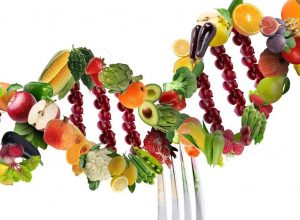 I’m not talking about the obvious things that have clear explanations, such as foods that grow directly out of religious obligations, strictures or holiday observances. We can fully understand why virtually every community consumed some kind of slow-cooked stew each week for Shabbat lunch, or why there are so many foods that contain matzohs on Passover. Charosets from around the world may be more similar than they are different, as are symbolic Rosh Hashana dishes. And while each community may have a different fried food for Chanukkah or pastry named for one of Haman’s body parts, none of these should be surprising to anyone who knows about Jewish culture.
I’m not talking about the obvious things that have clear explanations, such as foods that grow directly out of religious obligations, strictures or holiday observances. We can fully understand why virtually every community consumed some kind of slow-cooked stew each week for Shabbat lunch, or why there are so many foods that contain matzohs on Passover. Charosets from around the world may be more similar than they are different, as are symbolic Rosh Hashana dishes. And while each community may have a different fried food for Chanukkah or pastry named for one of Haman’s body parts, none of these should be surprising to anyone who knows about Jewish culture.
Still, while it is remarkable how many such foods indicate the unity that exists within the diversity of Jewish cuisines, even more notable are the throughlines that run through different Jewish kitchens worldwide that do not necessarily have clear explanations. Flavor combos or ingredients that for inexplicable reasons crop up in Jewish foods from Poland to Persia, Australia to Argentina, and everywhere in between.
The first one, that we also find in the soup, is half of its Yiddish name. Knobl is the Yiddish word for garlic, and not surprisingly, the soup features enough to ensure you get no vampires as unexpected Seder guests. What may be surprising, however, is how widespread the Jewish love of garlic runs. Along with onions, garlic is one of the primary flavoring agents in Jewish foods across time and space, so much so that the smell of garlic itself became an antisemitic trope. Jordan D. Rosenblum explored this succinctly and insightfully in his essay “A Brief History of Jews and Garlic,” published in Feasting and Fasting: The History and Ethics of Jewish Food.
The medieval period brought claims of a foetor judaicus, the “Jewish stench” tied to garlic. An early 17th-century antisemitic caricature of a Jew features him holding a bag of money in one hand and a cluster of garlic bulbs in the other. (And the garlic is in his right hand, indicating which is the really important one.) And that vampire reference I made above might even stem from the antisemitic association between Jews and garlic, according to some folklorists. My point is that separating the anti-Jew hatred from this trope, clearly the foundation lies in the observed truth that Jews do indeed love garlic. If our use of cinnamon, for example, was as widespread as that of garlic, the foetor judaicus would have had a sharper and spicier tinge to it.
This “chromosome” in Jewish Food’s genetic makeup can be traced back to the earliest part of our history. The Tanakh (Jewish Bible) in the book of Bamidbar (Numbers) speaks of the Israelites’ complaint about the magical manna food they ate in the Sinai Desert. They longed for a little variety, including the foods they ate when they were slaves in Egypt! They specifically cite six foods they longed for; garlic and onions are two (along with fish, leeks, melons and cucumbers, though we don’t always know with certainty if our translations of biblical food terms are 100% accurate).
Can we possibly believe the slavery experience was so formative for our people that the foods we ate back then became embedded in our collective taste palate? Honestly, I find that hard to believe. Though perhaps a slightly easier to swallow corollary is that from the earliest days of our national existence, we kept repeating the foods that we knew and loved. Some of them probably dropped away over the millennia of transmission, but others became encoded into the building blocks of our cuisine. Then, as we split into groups that spread throughout the Diaspora, those building blocks remained in each branch of our diverse food culture.
If the Jewish love for garlic indeed goes all the way back to Egypt, I must say there is a distinct irony in the knobl borscht-Passover connection. Many see the Torah’s prohibition against consuming leavening on the holiday as a direct attack on the foods of Egypt. Sourdough — the original leavening agent — is believed to have originated there. If so, perhaps garlic is not the most appropriate food for us to consume on the holiday. (Don’t worry, I am not genuinely pushing for yet another food to be forbidden to us. There are already plenty.)
Sweet and Sour
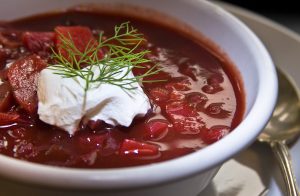 Another part of Jewish Food’s genetic signature is a love for the sweet-and-sour combination of flavors. From the tamarind or pomegranate syrup of Syrian food, Iraqi ingriyi (sweet/sour meat and eggplant) and Baghdadi Indian chittarnee (sweet/sour onion chicken) to Hungarian-style stuffed cabbage, Eastern European pickled herring and German sweet-and-sour carp or pickled tongue, the specific combination of sweet and sour flavors can be found in many Jewish favorites.
Another part of Jewish Food’s genetic signature is a love for the sweet-and-sour combination of flavors. From the tamarind or pomegranate syrup of Syrian food, Iraqi ingriyi (sweet/sour meat and eggplant) and Baghdadi Indian chittarnee (sweet/sour onion chicken) to Hungarian-style stuffed cabbage, Eastern European pickled herring and German sweet-and-sour carp or pickled tongue, the specific combination of sweet and sour flavors can be found in many Jewish favorites.
Therefore, it is not surprising that borscht features this combination. Though there are numerous varieties of borscht throughout Slavic territories, the Jewish versions always contain a souring agent to balance the natural sweetness of the beets. Jews typically ate two main varieties: a hot, meaty version (of which knobl borscht is one sub-type) and a cold, vegetarian version for a refreshing summer treat. The cold would typically have sour cream stirred in right before serving, while the hot one traditionally featured homemade rosl.
The Jews of Eastern Europe are known for the wide variety of pickled foods they prepared, and rosl is simply pickled beets. The process took a few weeks, and was typically done a few weeks before Passover with a leftover portion of beets that had lasted through the winter. The resulting beet vinegar formed a key portion to any Jewish hot borscht in Poland or Russia, for example.
Simultaneously bulking up the sweet side of the dish, sugar (when available) and onions would be added to the soup as well. As with knobl borscht’s garlic, we see this other flavor stamp of the soup tying an Ashkenazi staple into the wider world of Jewish cuisine.
Ashkenazi Food’s Complexity
Moving to the narrowest level, borscht also reveals some of the complexity within Ashkenazi cuisine itself. For starters, many people lump diverse foods together under the single unified heading “Ashkenazi food,” even while making the most minute distinctions between Algerian and Libyan versions of a single dish. In reality, every country and region of the world, and of the Jewish world in particular, had dishes that were special to them, and each deserves equal attention.
Some look at borscht and see a classic Ashkenazi food. Don’t tell that to German, Hungarian or French Jews, however! Borscht was really only eaten in the Slavic areas of Russia, Ukraine and parts of Poland and Lithuania. And it highlights how diverse Ashkenazi food is as well. You’d be hard-pressed to find borscht on the table in any Austrian-Jewish home, for example. There are at least as many things that separate the foods of Swiss, Romanian and Russian Jews as there are that differentiate Lebanese-Jewish food from that of the Jews of Afghanistan.
Furthermore, the Ashkenazi world was drastically altered during the second half of the nineteenth century and the first half of the twentieth. First, the great migration that brought so many Jews from Germany and Eastern Europe to America, and then the Holocaust that murdered such a huge percentage of those who had remained behind, means that the epicenter of the Ashkenazi world shifted from Europe to America. And there the food underwent massive changes. Thus, what we today think of as Ashkenazi classics may be drastically different than they were back in Europe.
The souring agent is a perfect example. As mentioned, rosl was the classic ingredient in Eastern Europe. It is so rarely made in the U.S. that most people have never even heard of, let alone tasted it. In America, the old-school replacement was sour salt, aka granulated citric acid. Even that, in time, became less popular and straight lemon juice took its place. When I was a child, my mom’s knobl borscht used the former ingredient, while today she makes it with lemon.
The shift from homemade (the beet vinegar) to a purchased product (sour salt) also shows up in the soup itself. Borscht was one of the earliest soups to be mass produced and sold to the Jewish American market. Companies like Gold’s and Rokeach, looking to expand their product lines (particularly for Passover) sold jarred borscht. And those brands are still amongst the most popular today. This was a much easier base for borscht than dealing with the raw beets previously required by the dish.
Of course, the popularity of the soup with American Jews in general is also what led to its name being appropriated and applied to the Jewish resort territory in New York’s Catskills Mountains. Hence, the Borcht Belt was born.
So much to be found in this simple soup, that both differentiates and unifies disparate parts of the wide world of Jewish foods!
Just as I did with my post on krupnik/mushroom-barley soup, I figure its nice to put here my mom’s “recipe” for this soup. Feel free to try it at your Seder, and let me know how it turns out! Once again, I am writing it as she told it to me, so quantities are sort of “up in the air.” The nature of verbal transmission!
Ricki Haber’s Knobl Borscht
Take a number of beets [Joel’s suggestion: approx. 6], wash and peel them. Dice into small pieces. Do the same with a couple of onions and 1-2 peeled and cored apples. Slice cloves of a half a bulb of garlic. Put all into a large pot.
Add salt and pepper to taste. Alternatively, replace some of the salt with “chicken soup powder.”
Zest a half a lemon and add the zest along with the juice of the half lemon into the pot.
Cover with water and/or beef broth. If you don’t have enough beets to start, you can also add a jar of prepared borscht as part of the liquid. Add 1 large or two small strips of flanken (beef short ribs) on the bone. Bring to a boil then lower heat to simmer for 1-2 hours. Let it cool and place in refrigerator to chill. Remove the solid fat from the top before reheating to serve.
Separately, peel 4-5 potatoes and cut into chunks. Boil or steam them.
To serve soup, place 1-2 potato chunks in each bowl and ladle the borscht over them.

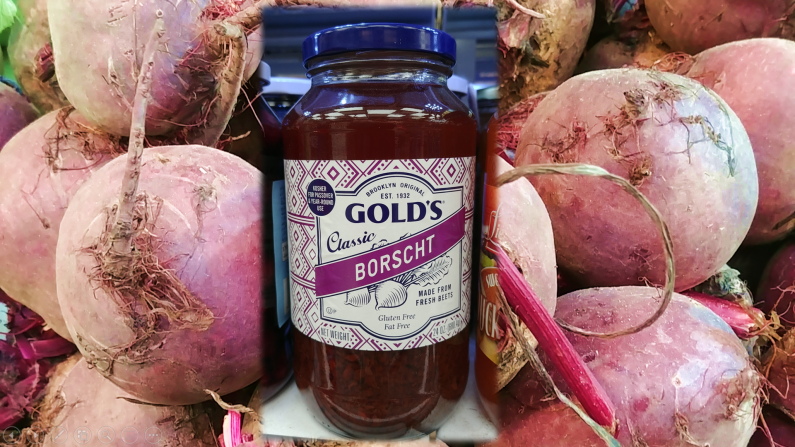
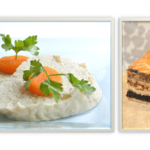


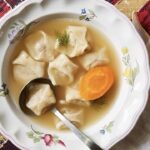

Thank God for Food Spoilage - The Taste of Jewish Culture
[…] popular dishes of the community. Cheesecake is a great example of its incorporation, as is the borscht I wrote about previously (which also was based on the preserved-by-fermentation beet product, […]